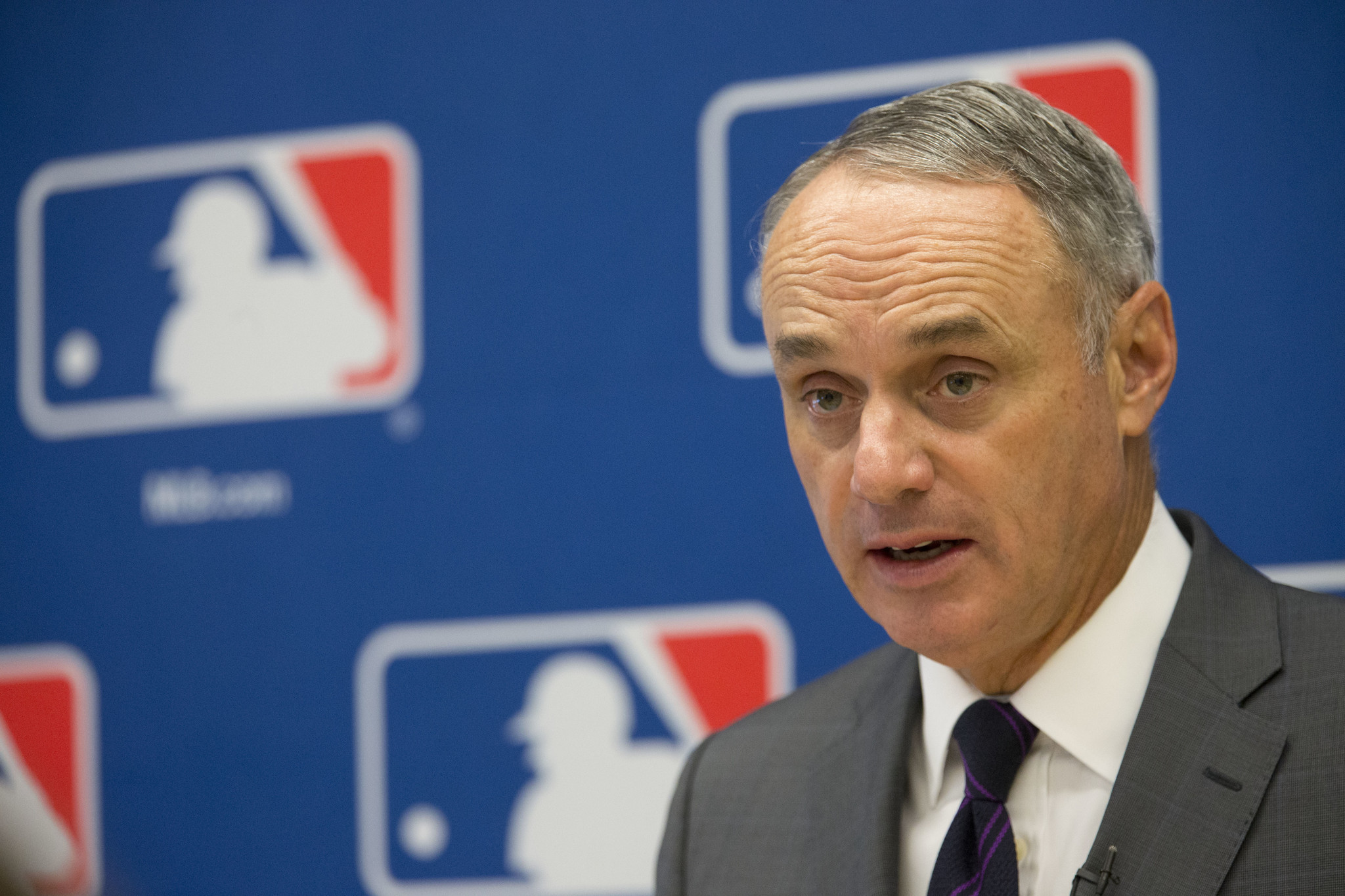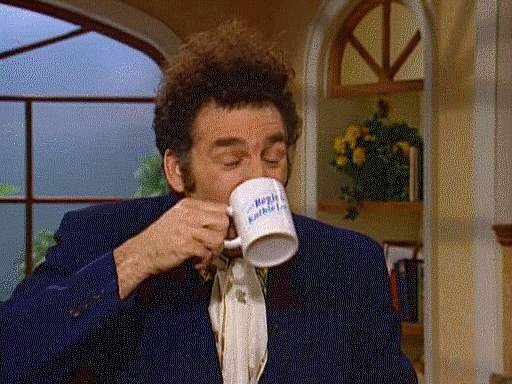Don’t worry people, it’s almost over. It being the doldrums of the post-Winter Meetings, pre-Spring Training MLB offseason. During this time we get pictures of Brian Cashman once again propelling a high-rise and — for the hundredth time — the story of Clint Frazier getting froyo with Reggie Jackson (which Clint told us about on The Bronx Pinstripes Show back in November).
We also received news that Major League Baseball has a few things up their sleeve designed to improve pace of play.
One of Rob Manfred’s first endeavors as commissioner was to shorten games. Baseball first tested potential rule changes in the Arizona Fall League — and they actually worked. Things like eliminating the need to throw four pitches for an intentional walk, putting a time limit on inning breaks, and creating the batter’s box rule.
The pace of play problem
This past week, MLB officially proposed changes to the players’ union that would raise the strike zone and implement the aforementioned intentional walk rule.
From ESPN — MLB’s (first) proposal would raise the lower part of the strike zone to the top of the hitter’s knees. Since 1996, the bottom of the zone has been defined as “the hollow beneath the kneecap.” But data shows that umpires have been increasingly calling strikes on so many pitches below the knees that, if umpires enforce the redefined strike zone, it would effectively raise the zone by an estimated 2 inches.
The idea behind effectively shrinking the strike zone (MLB used the word “raise”) is to increase contact. I’m not sure if this would actually decrease the length of games, but it would definitely create more action.
Do you remember the late 1990’s and early 2000’s when the strike zone was laughable small — essentially the belt buckle to the knees? Baseballs were being cremated to the moon and back. Yeah, I know a lot of that had to do with PEDs, but baseball was never more exciting and it had more to do with the amount of action (i.e. balls in play) than the muscle-bound freaks clogging the base paths.
So, if the union agrees to this strike zone change, I think it would be a positive for the league. If it does actually shave a few minutes off games, then that’s an added bonus.
Again, from ESPN: The change in the intentional-walk rule would end the long-standing practice of requiring the pitcher to toss four soft pitches outside the strike zone. Instead, a team could just signify it wants to issue an intentional walk, and the hitter would be sent directly to first base.
I don’t like this rule change. It may sound simple, and it is the go-to rule change that everyone and their mother throw around to sound like they “know the game,” but how much time does this really save?
There were 932 intentional walks last year in baseball, which is one every 2.6 games. The average IBB takes one minute, so every 2 or 3 games will be one minute shorter. Well whooooooopee! What ever will I do with all that extra time in my life?
Plus, we won’t have things like this happen.
They’re testing what?!
As if all that weren’t enough, Jeff Passan reported this: Major League Baseball plans on testing a rule change in the lowest levels of the minor leagues this season that automatically would place a runner on second base at the start of extra innings, a distinct break from the game’s orthodoxy that nonetheless has wide-ranging support at the highest levels of the league.
I guess, borrowing a rule from college football that makes their overtime some of the most exciting in sports, baseball hopes to create more excitement and quicker resolution in their version of overtime.
Let’s play this out: A runner starts in scoring position, essentially leading-off the inning with a double. How would that baserunner be determined? Is it the player who made the final out of the previous inning or can it be a pinch-runner? If it’s a pinch runner, can said pinch runner be used multiple times? So many questions…
Anyways, a bunt will immediately follow which is what every manager does in extras when the leadoff hitter smacks a double to start an inning. Assuming the bunt is successful, the opposing manager will pull the infield in and the potential winning run will be able to score in a number of ways: sac fly, dribbler through the drawn-in infield, wild pitch, bloop, you get the picture.
Joe Torre was quoted in Passan’s article, “Let’s see what it looks like. It’s not fun to watch when you go through your whole pitching staff and wind up bringing a utility infielder in to pitch. As much as it’s nice to talk about being at an 18-inning game, it takes time.”
No, Joe, you’re wrong. It is fun when a utility infielder comes in to pitch. It may not be fun for the manager or player, but I’ll always remember Ichiro spinning 83-mph sliders like some damn circus act.
If you want a quicker resolution in extras, why not just mandate a position player has to pitch? Or juice the balls. Or take an outfielder away if the game goes past the 13th inning. Or only allow the pitcher to throw fastballs. Or put giant industrial-sized fans behind home plate blowing out so there are more dingers.
All that is ignoring another elephant in the room: What happens when we get to October? You’re telling me Game 7 of the World Series could potentially be determined by some gimmicky rule? Ask the Cubs and Indians, who just played the most epic baseball game in history, how they feel about that rule.
What will most likely happen is the rule will be abandoned for the playoffs, which brings up yet another issue. Now we’re playing two different games — one video-game style of baseball in the regular season and then the real thing when it “counts.” What if teams specifically design their regular season team to have a pinch-running weapon for extras, but then can’t utilize this player in the playoffs? It’s a mess, I tell ya, a giant mess.
I don’t doubt the new rule would create more action in extras when teams are often dragging from exhaustion. It will definitely eliminate those wacky 15+ inning marathon games (which happen to be some of my favorites but I understand are unnecessary to determine an August baseball game). But, similar to intentional walks, extra innings is not the real issue causing long baseball games.
Thats enough, throw the ball
Instead of focusing on small details that, admittedly, do increase game length, the league should focus on the everyday issue: there is too much dead action in-between pitches.
Games averaged 3:08 in 2016, up 7 minutes from the previous year, and the biggest reason is because pitchers like David Price take in excess of 25 seconds to throw the damn pitch.
Another one of the successful AFL tests was a 20-second rule. It required a pitcher to throw the ball within the allotted time, and if he failed to do so a ball would be added to the count. If the batter, also held to the clock, was not in the batters box after 20 seconds, a strike would be added to the count. It was that simple.
Last week on The Bronx Pinstripes Show, I joked that in order to hold players to the 20 second clock the league should put giant flashing red lights above each dugout that would signal a siren if 20-seconds was exceeded. While I was only half serious, that solution is more sane than completely changing the fundamental rules of baseball and turning it into a beer softball league.
I understand there are many, many factors that go into long baseball games. In addition to all the in-game minutia like multiple mound visits and pitcher changes, the inning breaks are also far to long. But guess what? The league is never going to reduce them because that would mean decreasing the number of commercials, thus decreasing revenue.
I, along with most people reading this, am unique in the sense that I’m going to watch regardless. Would I like games to be shorter? Yes, but a hand full of minutes is not worth changing the rules of the game.
The only issue worth fixing is the time it takes to throw a pitch. Until they implement a hard-and-fast rule for it, games will continue to be long.





